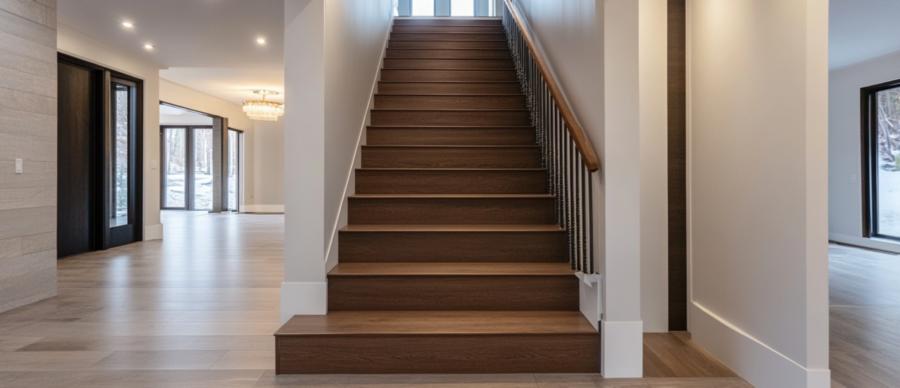Rethinking Layouts: Stop Tripping Over Your Life
Ever played the game where you navigate your home without stepping on a rogue LEGO or miscalculating a sharp corner? That game isn’t fun. Poor layouts don’t just cost you bruised shins—they cost you peace of mind.A smart layout redesign isn’t about creating a “Pinterest-perfect” space; it’s about flow. Open-concept designs, for instance, can reduce feelings of confinement. By creating intuitive pathways and dedicating zones to specific activities (a cozy reading nook, an actual home office), you give your brain the visual cues it needs to relax or focus.
Research suggests that spaces free of unnecessary clutter and bottlenecks reduce cortisol levels—science’s fancy way of saying less chaos, more calm. A clutter-free home with a functional flow is the adult version of not stepping on LEGOs: it makes life better.
Natural Light: Nature’s Prozac
If your living room relies on a single, flickering lightbulb to illuminate your evenings, you’re doing yourself a disservice. Natural light isn’t just a nice-to-have; it’s practically a superpower. Exposure to daylight boosts serotonin, improves sleep, and even increases productivity. It’s like nature’s Prozac, except it won’t come with a long list of side effects.Renovations that emphasize larger windows, skylights, or glass doors can flood your space with sunlight and your brain with endorphins. Even strategically placed mirrors can reflect light into darker areas, turning a drab corner into a bright, inviting space.
Artificial lighting deserves its moment, too. Say goodbye to those clinical fluorescent bulbs and hello to warm, adjustable LEDs that mimic daylight. It’s the little lighting tweaks that can make you feel like less of a vampire and more of a functional human.
Ergonomics: Because Your Spine Deserves Better
Let’s address the elephant in the room—or rather, the chair in your home office. That budget swivel chair you picked up years ago may as well be a medieval torture device. Ergonomics is no longer just a corporate buzzword; it’s the key to staying comfortable and pain-free in your space.An ergonomic home design considers everything from proper desk heights to supportive seating and well-placed storage. Imagine cooking without straining to reach the top shelf or working without a stiff neck by lunchtime. Thoughtful design doesn’t just improve productivity; it improves how your body feels after a long day.
Investing in adjustable furniture and creating workstations tailored to your needs is essentially self-care disguised as interior design. And no, using three couch cushions as lumbar support doesn’t count.
Color Psychology: Paint Your Way to Positivity
Let’s talk about that beige wall you’ve been staring at for years. While neutral tones can feel safe, they don’t exactly spark joy. Colors have a sneaky way of influencing your emotions—blue calms, yellow energizes, green restores balance, and red… well, maybe save that one for the gym.A home renovation gives you the perfect excuse to ditch uninspired hues and embrace a palette that aligns with your goals. Want to relax? Soothing pastels can work wonders. Need a productivity boost? Vibrant, cheerful tones might be the ticket. It’s not just about aesthetics; it’s about setting the mood for your space—and your mind.
The Zen of Storage: Out of Sight, Out of Stress
There’s a reason minimalism took off as more than just an Instagram trend: clutter is a silent stressor. Studies show that disorganized spaces can increase anxiety and decrease focus. If you’ve ever opened a drawer and been greeted by the chaos of old batteries, random receipts, and unidentifiable cables, you know what I mean. Renovations provide an opportunity to build in smarter storage solutions. Think hidden shelves, pull-out pantries, and multi-functional furniture. When every item has a designated spot, your home starts to feel less like a scavenger hunt and more like a sanctuary.The result? More headspace for what really matters—like finally figuring out what those mystery cables actually belong to. Or not. It’s fine; they can stay in the junk drawer’s hall of fame.
Grounded in Joy: Floors Matter More Than You Think
Your floors quietly endure everything: muddy shoes, pet hair, spilled wine, and the occasional interpretive dance session. But their influence on your mental well-being is anything but silent. The texture, temperature, and color of flooring can all affect how you feel.Warm woods and plush carpets bring coziness, while sleek tiles and polished concrete offer a modern, clean vibe. If you’ve been tiptoeing around creaky boards or lamenting outdated linoleum, it’s time to reconsider. Fresh flooring not only elevates your space but also provides a literal foundation for a happier home.
Floor Plans and Future Plans
Renovating your home isn’t just about knocking down walls or splurging on fancy fixtures—it’s about creating a space that works with you, not against you. From lighting that uplifts your mood to layouts that flow like a dream, every choice has the power to reshape not just your home, but your mindset.So, whether you’re ditching that questionable couch from college or finally installing a proper desk, remember: a thoughtful renovation isn’t just an upgrade for your home. It’s an upgrade for your life. And maybe, just maybe, you’ll find yourself smiling a little more as you walk through your beautifully redesigned front door.
Article kindly provided by markhamhomerenovations.com


